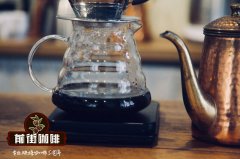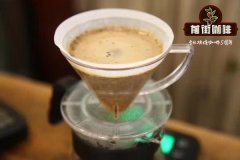Sun exposure to the characteristics of Yega Chuefeiwaka.

Professional coffee knowledge exchange more coffee bean information please follow the coffee workshop (Wechat official account cafe_style)
The Worka Woka Cooperative, located in the Gedeb district of southern Ethiopia, joined the Yegashafi Coffee Farmers Cooperative Union (YCFCU) in 2005 and currently has 305 small farmers, belonging to small and beautiful elite cooperatives in the alliance, producing coffee batches that have always had an amazing performance. Among them, many small farmers are very good, such as the Alim Alemu small farmer, who is well known in Taiwan. Coffee trees in this area grow at an altitude of 1650-2700 meters above sea level, which is quite high, with abundant rainfall and sunshine. The coffee produced in this area is of excellent quality and is widely loved, and is certified for fair trade and organic production.
Because no chemical fertilizers or pesticides are used in coffee cultivation, Waka farmers have also obtained the Skal organic coffee certification recognized by the European Union.
More than half of Ethiopian coffee cultivation belongs to the Garden Coffee type, courtyard coffee as its meaning, small coffee farmers in their own backyard small area of coffee, the average planting area of 0.5 to 1.5 hectares per household, coffee as the main cash crop, in addition to grow crops such as plantain as shade and food.
Each farmer is not only self-sufficient in grain, but also produces coffee beans in exchange for other daily necessities. This mode of production, coupled with the local unique native tree species coffee garden, makes the flavor of each batch of coffee beans different, with considerable uniqueness.
The cooperative, made up of 305 farmers with a planting area of 763 hectares, has obtained Fair Trade Organic Coffee (FTO) certification because it does not use any chemical fertilizers or pesticides in its coffee growing process. After the ripe cherries are picked, they are almost immediately put on the drying shed bed for sunlight, so that the sweetness of the flesh can be absorbed by beans. Sun treatment is especially suitable for areas where there is a lack of water, or in a very dry environment. In order to avoid excessive fermentation or even mildew, the fruit must be turned frequently on the drying bed to allow air circulation to dry evenly when the fruit is dried in the sun. Then sent to the dry processing plant (dry mill) to remove the dried pulp, the sun drying procedure is actually quite complicated, and it is easy to fail in the process, but good sun treatment can bring stronger sweetness, thicker taste and more detailed sour taste.
Woka Cooperative's Sun Yega Chuefei has always been a quality assurance, and it is also the star product of Counter Culture and Klatch Coffee, the third wave of boutique coffee makers in the United States. Coffee Review, a well-known boutique coffee review website, has repeatedly given high scores of 91 to 94.
Klatch Coffee, a well-known American company, won the Best Food Award (Good Food Award) in the food industry for this bean, and won the title of Best Coffee Shop of 2012 (2012 Best Coffeehouse) at the end of the year.
Important Notice :
前街咖啡 FrontStreet Coffee has moved to new addredd:
FrontStreet Coffee Address: 315,Donghua East Road,GuangZhou
Tel:020 38364473
- Prev

What is the difference in appearance and flavor between washed Yejashefi coffee and sunlit Yejabee coffee beans?
The raw bean treatment method is different from the Yejia Xuefei water washing method: the peel, pulp and mucous membrane are removed by washing and fermentation, and the coffee beans are washed until smooth and clean. after washing, the coffee beans are still wrapped in the pericarp with a moisture content of 50%. It must be dried to reduce the moisture content to 12%, otherwise they will continue to be mellow, moldy and rotten, and the better treatment is to use sunlight to dry.
- Next

Wash ye jia sherry cocher taste characteristics.
Professional coffee knowledge exchange More coffee bean information Please pay attention to coffee workshop (Weixin Official Accounts cafe_style) Kochere is a small producing area located about 25 kilometers southeast of Yejia Shefei. The coffee beans harvested come from local coffee farmers and are composed of a large number of individual coffee farmers. The average cultivation area of these small farmers is about 1 hectare.
Related
- Detailed explanation of Jadeite planting Land in Panamanian Jadeite Manor introduction to the grading system of Jadeite competitive bidding, Red bid, Green bid and Rose Summer
- Story of Coffee planting in Brenka region of Costa Rica Stonehenge Manor anaerobic heavy honey treatment of flavor mouth
- What's on the barrel of Blue Mountain Coffee beans?
- Can American coffee also pull flowers? How to use hot American style to pull out a good-looking pattern?
- Can you make a cold extract with coffee beans? What is the right proportion for cold-extracted coffee formula?
- Indonesian PWN Gold Mandrine Coffee Origin Features Flavor How to Chong? Mandolin coffee is American.
- A brief introduction to the flavor characteristics of Brazilian yellow bourbon coffee beans
- What is the effect of different water quality on the flavor of cold-extracted coffee? What kind of water is best for brewing coffee?
- Why do you think of Rose Summer whenever you mention Panamanian coffee?
- Introduction to the characteristics of authentic blue mountain coffee bean producing areas? What is the CIB Coffee Authority in Jamaica?

